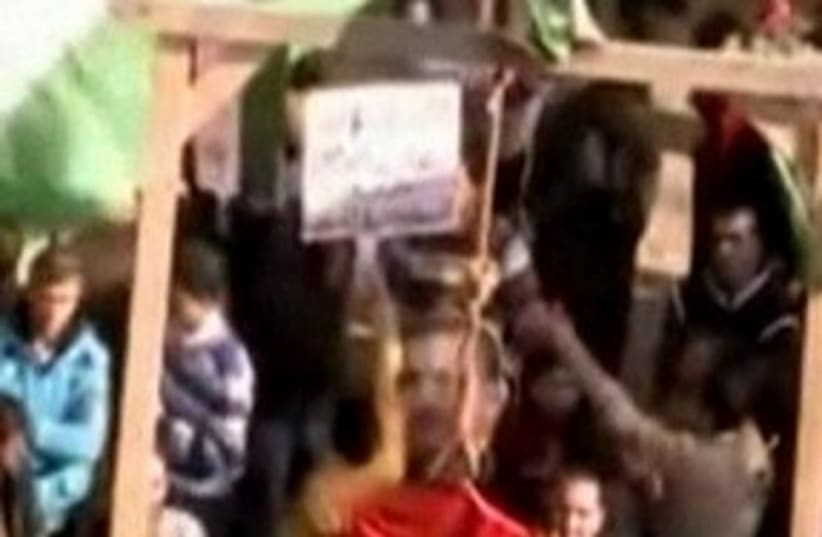The FSA appears to be a relatively flat organization, with a command and headquarters in Turkey, possibly a set of regional or area commands with subordinate groups in Syria, and, according to media reports, one or two combat elements in Lebanon. Command and control appears to be relatively loose, with the Turkish headquarters providing general direction and the units in Syria exercising largely independent control over their operations.Earlier this month elements of two units in the Damascus area – the Abu Ubaydah al- Jarah Battalion and the Muawiyah bin Abi Sufyan Battalion – reportedly cooperated in an action against regime forces, suggesting at least some degree of coordination.Command and control is exercised through a variety of means, including cell phones, e-mail, Facebook, and, presumably, couriers. The regime has reportedly captured a number of sophisticated communications devices from “armed terrorists,” including Thuraya satellite mobile phones, very high and ultra-high frequency (VHF/UHF) devices and Inmarsat mobile communication satellite systems.The FSA’s order of battle (command structure, units, deployment, strength and equipment) is becoming somewhat clearer over time. The group claims to have as many as twenty-two “battalions” operating against the regime; media reports indicate sixteen such battalions are active, with four additional battalions probably active. Yet the number of fighters associated with each battalion – assuming the term is even used in a consistent way – is uncertain.FSA battalions are reportedly led by junior officers, in most cases lieutenants and captains, suggesting formations with 100 to 200 or even fewer personnel.The battalions appear to be independent formations, although higher-level formations may exist. In the Homs area, for example, the Khaled ibn al-Walid Brigade appears to comprise several subordinate battalions.FSA membership appears to consist largely of experienced military personnel – a cadre of officers and noncommissioned officers with, in some cases, social connections to local families and clans, towns and neighborhoods. In other words, they know how to use weapons and are fighting on terrain they know.The total number of FSA personnel is uncertain. The group’s leadership has claimed 10,000-15,000, but this seems too high. A more likely range is in the low thousands, consistent with the number and likely size of the battalions.FSA weapons seem to be mostly small arms (rifles, light machine guns), rocket-propelled grenades (RPGs), some heavy machine guns and various explosive devices. RPGs are being used effectively against the regime’s armored vehicles, especially the relatively lightly armored BMP infantry fighting vehicle variants that have been heavily employed by the government.These types of weapons are generally well suited to the primarily urban fighting waged so far in Syria. Weapons sources include the defectors, reported smuggling (especially from Lebanon, but also Turkey), and capture of materiel during engagements with regime forces.• Deployment and operations
The FSA is operating throughout Syria, both in urban areas and in the countryside.Forces are active in the northwest (Idlib, Aleppo), the central region (Homs, Hama, and Rastan), the coast around Latakia, the south (Deraa and Houran), the east (Deir a-Zor, Abu Kamal) and the Damascus area. The largest concentration of these forces appears to be in the central region (Homs, Hama, and surrounding areas), with nine or more battalions reportedly active there.Most FSA operations seem to be small-unit actions involving anywhere from a few to a few tens of personnel. The fighting in Rastan and Homs in September and October appears to have included somewhat larger actions.Operations have included defense of local areas, ambushes of convoys and vehicles, attacks on regime positions and facilities, attacks on regime security forces and militia elements, attacks on regime officials and military officers, intervention against regime forces attacking demonstrators, and road closings.The FSA has also fought at least three serious “battles”: for Rastan/Talbisah (September 27- October 1), for Homs (October 28-November 8), and for Kherbet Ghazalah (November 14).These actions featured sustained engagements with regime forces, and although the FSA broke off the fighting in each case, it was able to inflict losses and generate more defections.The regime was also forced to deploy large combat formations (division or brigade equivalents) in serious combat operations.The FSA’s actions are compelling the regime to deploy forces throughout the country and fight, not just continue to shoot unarmed civilians.• Outlook
The Assad regime cannot survive without killing, and the FSA has changed the game from one in which the regime was free to kill its citizens at will and without cost, to one in which it faces an armed opposition and is suffering losses.Increased demands on government forces and further civilian deaths will produce more defections, and these processes will in turn escalate the fighting.Because the FSA is an increasingly important player that will likely influence the outcome of events in Syria, the United States and its partners should make contact with its members and learn as much as possible about the group.Questions concerning its nature, its potential as an armed force, and the role of Islamists can be resolved through such contact as well as intelligence work. If the results are positive, then the FSA should be assisted wherever outside aid would be both possible and effective.Arms, advice, training, and money could be provided through clandestine channels, if nothing else. These modest steps could help provide the Syrian people with a means of self-defense, give the United States additional influence on the situation, and put further pressure on the regime and its forces, perhaps hastening the conflict’s end.The writer is a defense fellow at The Washington Institute for Near East Studies, specializing in military and security affairs. This article originally appeared on the Washington Institute website. (www.washingtoninstitute.org)
